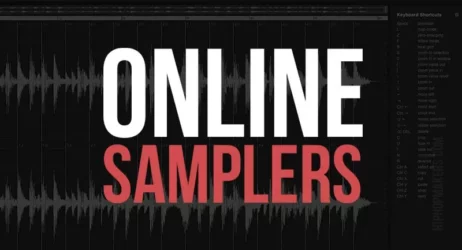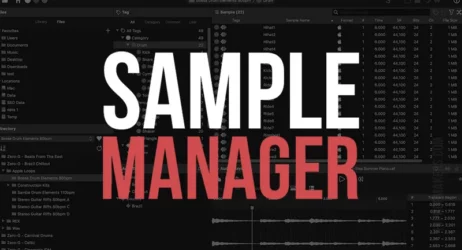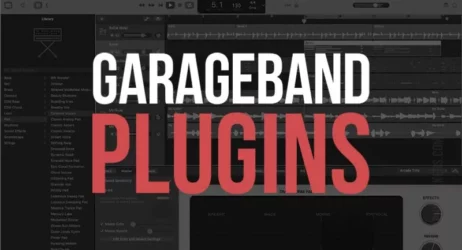In this guide we will answer what is sample rate in audio, the difference between bitrate, audio quality, and the most popular sample rates.
- What Is Sample Rate in Audio
- Is Sample Rate The Same As Bitrate
- Do Higher Sample Rates Sound Better
- What Is A Good Audio Sample Rate
- Does Sample Rate Affect Sound Quality
- What Happens With Low Sampling Rates
- What Is The Best Sample Rate For Audio
- Which Sample Rate Is Better 44.1 or 48
What Is Sample Rate in Audio?
The sample rate used in audio is the number of samples taken per second to record an audio track. Using a higher sample rate will increase the audio quality, but it will also use more storage space. The sample rate operates in the same way that the hertz works.
The word “sample” represents the digital part of an analog wave. It may be the most important technical factor for deciding the audio quality of a digital media file.
This determines the sound quality. For example, CD-quality audio is 44,100 Hz. Higher sample rates will give you improved audio quality.
But there is no perfect point for the sample rate. If you want the stereo quality to be correct, it should be half the sample rate.

You may be reading this wondering what you can do to improve the sound quality of your own mixes and recordings. One quick and easy answer is to use a higher sample rate.
There are several choices for sample rate, so it can be a bit difficult to choose the right one. One is Nyquist Theorem, which is the foundation for all digital sampling.
Using this theorem, you can calculate the theoretical maximum sample rate that can be used without incurring any distortion in your audio.
Aside from that, it’s also important to note that there’s a problem at a high frequency where you can start hearing distortion.
Turning the volume up beyond that point will distort the sound even more. So, it may be best to stay within that 40,000 limit.
What Are The Common Sample Rates Used In Audio?
The most common sample rates are 44100 Hz, 48000 Hz, 96000 Hz, and 176.4 kHz. Choosing the correct sample rate depends on the type of sound you’re recording. Audiobooks, for instance, are recorded at 44100 Hz.
The sample rate is the number of samples you need per second that affects the sound quality. CDs can only contain 16-bit depth, so any higher resolution than that makes your audio less accessible in that format. A higher sample rate will also produce a richer sound experience.
What Is Meant By Bit Depth?
The sample depth has to do with the bit depth of the recording. Blu-ray audio recordings are recorded at a sample depth of 32 bits, which means a high-sound quality recording.
The bit depth of the recording determines the sound quality of an audio recording. To put it simply, a higher bit depth means a higher sound quality. A CD audio recording, for example, is recorded at a sample depth of 16 bits.
What Is The Best Bit Depth For Music?
Bit depth is related to audio quality. In simple terms, a higher bit depth will result in better sound quality. Most digital music is recorded and stored in 16 bits per sample.
However, 16 bit is not the best format for reproducing music. The best format is 24 bits. The difference between 16 and 24 bits is the frequency response and dynamic range.
A higher bit depth will enable the audio signal to go down to the lowest level without breaking. This allows for a more extensive dynamic range, which will improve audio quality based in the broader spectrum.
Is Sample Rate The Same As Bitrate?
Audio bitrate and sample rate are different types of technical jargon, but they are very closely related. The sample rate measures how meticulously sampled a wave per second is to represent it electronically.
On the other hand, bitrate is the amount of data used measured in bits per second. The higher the sample rate, the more bits you need to store, so your bitrate increases.
Do Higher Sample Rates Sound Better?
Higher sample rates sound better because they reduce distortion. They also have a lower bit rate, requiring less data to process. The higher the sampling rate, the better the audio file quality.
However, there is little to no difference in audio quality when listening to a sample rate of 44.1 kHz and a sample rate of 88.2 kHz; the higher bit rate of the 88.2 kHz file only slightly improves quality.
This means that if you are recording at 44.1 kHz, you should record at a bit rate of 320 kbps to ensure the highest sound quality possible.
However, if you are recording at 96 kHz, you should record at a bit rate of 320 kbps to maintain the same quality with the higher sample rate.
What Is A Good Audio Sample Rate?
A good sample rate for audio is 44,100 Hz because this is the standard rate for converting tapes into digital recordings. Most audiobooks use a sample rate of 44,100 Hz because this ensures the entire audio range is captured without any downsampling.
Audio sample rates are the number of samples taken per second, which dictates the minimum number of audio samples that can be used to replicate the original waveform.
The three primary purposes of audio are producing sound, storing sound, and transmitting sound. These three purposes are not contingent upon one another, but they overlap.
For recording, the primary purpose is to produce sound, so you need a higher sample rate and bit depth. However, if you are saving the audio for later, your goal is to store sound.
In that case, it is not necessary to record at a high sample rate or bit depth. It is best to save the audio at the highest quality possible but not overkill it.
Does Sample Rate Affect Sound Quality?
Sample rate does affect sound quality, but it won’t make a difference to most home music listeners.
Most digital audio devices have sample rates of 44100 Hz. A studio recording is typically recorded at 96000 Hz. A higher sample rate will produce a richer sound experience, but many speakers cannot reproduce that high frequency.
The bit depth also affects sound quality. Devices sold in the US are recorded at 16-bit, but professional recording studios use 24-bit, which is a higher-quality recording.
Bit depth also plays a significant role in sound quality. Higher bit depths help give you more information about the sound, and it will sound better. An audio CD is a 16-bit recording, and a Blu-ray audio track is 32 bits.
What Happens If The Sampling Rate Is Too Low?
If the sampling rate is too low, some part of the sound gets lost. For example, if you listen to music at 32 kHz, some of the high frequencies will be lost and not accurately represented, resulting in a loss of sound quality.
On the other hand, listening to music at a sample rate of 96 kHz will produce accurate sound, and it won’t be distorted when played on a device with 96 kHz support.
What Is The Best Sample Rate For Audio?
The best sample rate for audio is 44.1 kHz, which is the standard used by manufacturers of professional recording equipment. The most common sample rate for digital audio is 44.1 kHz, the standard used by CDs.
When listening to music, choose a sample rate that can match your hardware capabilities. If you have low-quality speakers and an old sound card, you should try to find files with a lower sample rate to keep the file size small and prevent loss of sound quality.
Choose files with a higher sample rate if you have high-end equipment and want to enjoy the best audio quality. It is also good to choose high-quality files with a higher bit depth.
Which Sample Rate Is Better 44.1 Or 48?
44.1 kHz is better because it matches what CDs use, and most hardware supports it.
A CD can’t contain any more data than a 44100 Hz file because the rotary speed used to spin the disc limits how much data can be stored in one revolution of the disc.
The higher the sample rate, the more information must be stored. Once you have enough information, everything else is just bonus data that isn’t needed.
The only reason 96000 Hz is used for professional recordings is that it can take advantage of modern hard drives and memory sizes. The higher the sample rate, the more space a recording needs.
A 48 kHz file uses about half as much storage space as a 96 kHz file. However, if you are recording at 48 kHz, you have to use a lower bit depth.
48 kHz files are only used for professional studio recordings because they need more space on your hard drive.
Sample Rate Overview
In audio recording, the sample rate refers to the number of samples taken per second. By increasing the sample rate, you will improve audio quality, but you will also need more storage space.
In the world of audio production, understanding the basics of sample rate and bit depth is crucial. It’s like the digital audio recording equivalent of knowing your ABCs.
The audio interface you use, the preferences you set, and even your computer’s processing power can all influence the quality of your recordings. Audio files with a higher sampling rate and greater bit depth will result in clearer audio, capturing all those intricate sound waves that make up your music.
As an audio engineer, it’s important to understand that sample rate conversion can require more processing power. This is where the standard sample rates come into play.
Using these rates, most DAWs (Digital Audio Workstations) can handle the workload, delivering excellent results. Remember, the higher the sample rate, the higher frequencies you can capture.
But don’t get carried away with high sample rates unless you’re making high-res recordings. Even the human ear has its limits and can only hear certain frequencies.
When you’re recording music, you’re essentially converting an analog signal, like the sound wave from your voice, into a digital audio file. This process, known as analog-to-digital conversion, is all about capturing the audio frequencies as accurately as possible.
The greater the sampling rate, the more accurately your digital recording will reflect the original audio source. But be cautious with higher rates – they can use up your CPU power quickly!
Lastly, don’t forget that the bit depth determines the audio resolution of your recording. The higher the bit depth, the more detail you’ll capture from the analog audio.
Streaming services often have a minimum sample rate and bit depth they accept for optimal sound quality.
Whether it’s the lowest or highest frequency, every detail counts when you’re aiming for excellent sample rate conversion and overall quality.
In the end, your choice of sample rates and bit depths depends on your audio preferences and the resulting audio you want to achieve.
After all, creating great digital audio is a balance between capturing all those beautiful sound waves and managing your processing power wisely. Happy recording!
I hope you now have a better understanding of sample rates and how it applies to music production.




